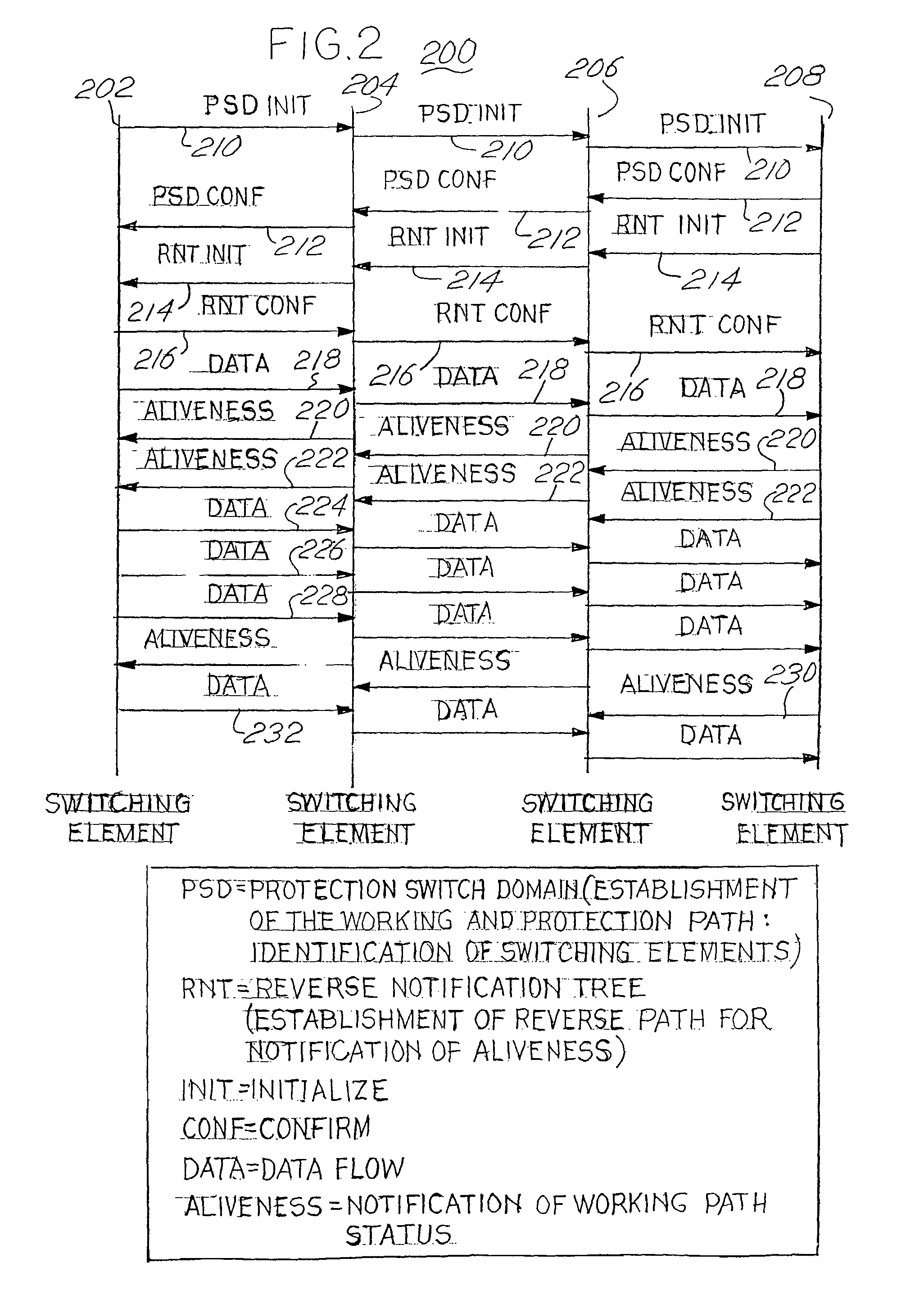Protection/restoration of MPLS networks
a technology of mpls network and mpls network, applied in data switching networks, frequency-division multiplexes, instruments, etc., can solve the problems of requiring recovery times of tens of milliseconds, serious service disruption, or both unidirectional links damaged, etc., to achieve reliable and efficient recovery, flexible delivery of new routing services, and the effect of reducing the amount of tim
- Summary
- Abstract
- Description
- Claims
- Application Information
AI Technical Summary
Benefits of technology
Problems solved by technology
Method used
Image
Examples
Embodiment Construction
[0051]MPLS protection switching refers to the MPLS layer's ability to effect quick and complete restoration of traffic during any changes in the status of the MPLS layer. Fast MPLS layer protection may be viewed as the MPLS LSR switch completion time that is comparable to, or equivalent to, the 60 ms switch completion time of the SONET layer. This section provides a discussion of the concepts and principles of protection switching for MPLS protection. We do not make any assumptions about the underlying layer 1 or layer 2 transport mechanisms or their protection mechanism.
Objectives
[0052]We lay down the following objectives for MPLS protection switching.[0053](i) MPLS protection mechanisms should facilitate fast recovery of the working traffic, to maximize network reliability and availability.[0054](ii) MPLS protection techniques should be specified for an LSP, PMTP, or PMTG.[0055](iii) MPLS protection techniques can be specified for traffic on an end-to-end LSP or for a segment of a...
PUM
 Login to View More
Login to View More Abstract
Description
Claims
Application Information
 Login to View More
Login to View More - R&D
- Intellectual Property
- Life Sciences
- Materials
- Tech Scout
- Unparalleled Data Quality
- Higher Quality Content
- 60% Fewer Hallucinations
Browse by: Latest US Patents, China's latest patents, Technical Efficacy Thesaurus, Application Domain, Technology Topic, Popular Technical Reports.
© 2025 PatSnap. All rights reserved.Legal|Privacy policy|Modern Slavery Act Transparency Statement|Sitemap|About US| Contact US: help@patsnap.com



